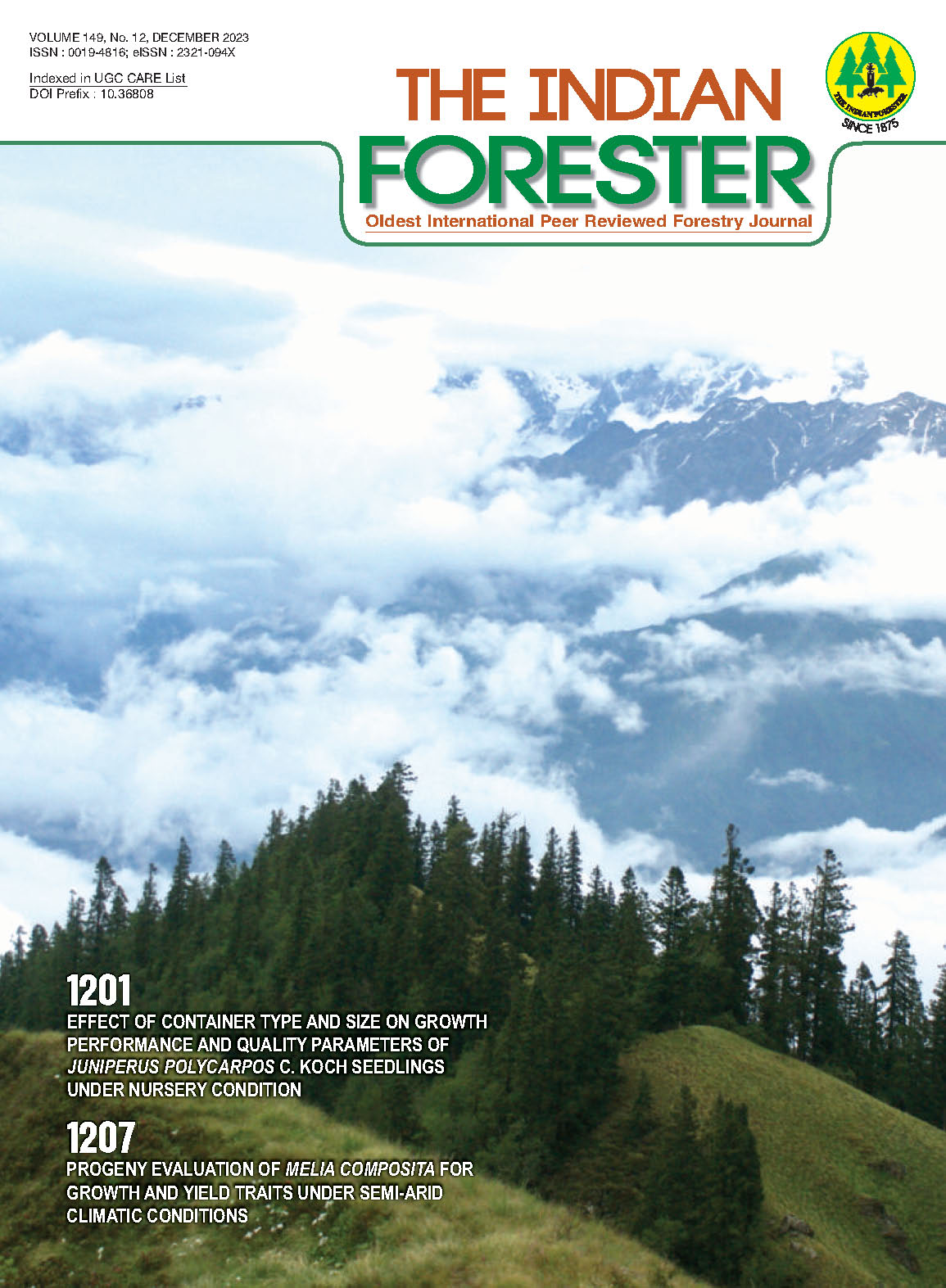New Adaptive Feature in Dolichandrone spathacea (L.f.) K. Schum (Bignoniaceae)
DOI:
https://doi.org/10.36808/if/2023/v149i12/169445Keywords:
Dolichandrone spathacea, Halophytes, Mangrove Associated, Salt Glands.Abstract
The Dolichandrone spathacea (L. f.) Seem. is a species of Bignoniaceae. In a swampy environment, the plant displays morpho-physiological adaptations. The findings showed that salt glands are found in all aerial parts, including leaves, branches, and reproductive organs like flowers and seeds. It is regarded as a new adaptive characteristic in the species. The number of salt glands present in each portion, their size in the leaf, the amount of chloride present, and their osmotic potential value has all been used to evaluate the dispersion of these glands. One of the necessary modifications to survive in this habitat is the presence of salt glands. This is an adaptation that helps organisms thriving in salty environments with few freshwater supplies maintain a healthy salt balance.References
Acosta-Motos J.R., Acosta M.F., Bernal-Vicente A., Diaz-Vivancos P. Sanchez-Blanco M.J. and Hernandez J.A. (2017). Plant Responses to Salt Stress: Adaptive Mechanisms. Agronomy, 7(1): 18. https://doi.org/10.3390/agronomy7010018.
Bhosale L.J. (2013). Mangroves of Ratnagiri and Sindhudurg District of Maharashtra. In:, Bhatt J.R., Ramakrishna, Sanjappa M., Remadevi O.K., Nilaratna B.P., Venkataraman K., (ed). Mangroves of India their Biology and Uses. Zoological Survey of India, Culcutta. pp. 183-190.
Colmenero-Flores J.M., Franco-Navarro J.D. Cubero-Font P., Peinado-Torrubia P. and Rosales M.A. (2019). Chloride as a Beneficial Macronutrient in Higher Plants: New Roles and Regulation. Int J Mol Sci., 20(19): 4686.
Dassanayake M. and Larkin J.C. (2017). Making Plants Break a Sweat: the Structure, Function, and Evolution of Plant Salt Glands. Front Plant Sci., 8: 406. https://doi:10.3389/fpls.2017.00406.
Duke N.C., Mackenzie J. and Wood A. (2012). A revision of Mangrove plants of the Soloman Islands, Vanuatu, Fiji, Tonga and Samoa. A Report for the MESCAL Project, IUCN Oceania Office, Suva.
Grasshoff K., Ehrhrdt M. and Kremling K. (1983). Determination of salinity. In: Methods of sea water analysis. Wiley–VCH, Weinheim, Germany. pp. 31.
Kathiresan K., Rajendran N., Nabeel M.A., Thiruneelkandan G., Manivannan S. and Kavitha S. (2013). Diversity of Mangrove species in India. In:, Bhatt, J.R., Ramakrishna, Sanjappa, M., Remadevi, O.K., Nilaratna, B.P., Venkataraman, K., (ed). Mangroves of India their Biology and Uses. Zoological Survey of India, Culcutta. pp 111-130.
Mohanan C. (2013). Fungi In Mangrove ecosystms of Kerala, India. In:, Bhatt, J.R., Ramakrishna, Sanjappa, M., Remadevi, O.K., Nilaratna, B.P., Venkataraman, K., (ed). Mangroves of India their Biology and Uses. Zoological Survey of India, Culcutta. pp 207-220.
Mullan D. (1931). On the occurrence of glandular hairs (salt glands) on the leaves of some Indian halophytes. Journal of Indian Botanical Society, 184-189.
Nayak V.N. and Andrade L.V. (2013). Diversity and distribution of mangroves in the Kali estuary, Karwar, West Coast of India. In:, Bhatt, J.R., Ramakrishna, Sanjappa, M., Remadevi, O.K., Nilaratna, B.P., Venkataraman, K., (ed). Mangroves of India their Biology and Uses.Zoological Survey of India, Culcutta. pp 141-160.
Ragvan P., Saxena M., Saxena A., Mohan P.M., Sachithanandam V. and Coomar T. (2014). Floral composition and taxonomy of Mangroves of Adaman and Nicobar Islands. Indian Journal of Marine Sciences, 43(6): 1031-1044.
Rahman M., Mostafa M.G., Keya S.S., Siddiqui N., Ansary M.U., Das A.K., Rahman A. and Tran L.S. (2021). Adaptive Mechanisms of Halophytes and Their Potential in Improving Salinity Tolerance in Plants. Int J. Mol Sci., 22(19): 10733.https://doi.org/10.3390/ijms221910733
Seibrt R.J. (1948). The use of Gland in Taxonomic Consideration of the Family Bignoniaceae. Annals of the Missouri Botanical Garden, 35(2): 123-137.
Yuan F., Leng B. and Wang B. (2016). Progress in Studying Salt Secretion from the Salt Glands in Recretohalophytes: How Do Plants Secrete Salt?. Front Plant Sci., 7: 977. doi:10.3389/fpls.2016.0
Downloads
Downloads
Published
How to Cite
Issue
Section
License
Unless otherwise stated, copyright or similar rights in all materials presented on the site, including graphical images, are owned by Indian Forester.





